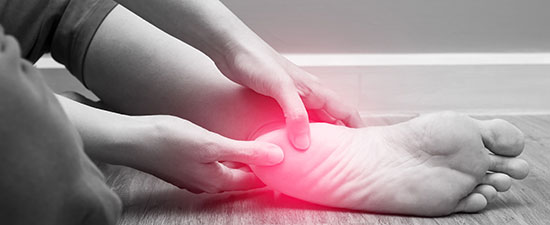- Home
- Advanced Treatments
- Tenex
Tenex Procedure
- Published 11/27/2018
- Last Reviewed 3/7/2024

If you’re one of 8 million Americans experiencing pain and discomfort in the Achilles tendon and/or plantar fascia, the Tenex Health Procedure, a minimally invasive treatment for soft tissue damage, may help.
Developed with Mayo Clinic, Tenex Health created a new conservative tendon procedure to help remove damaged tissue and leave behind healthy tissue, reducing tendon pain, aiding healing, and reducing the likelihood of more invasive treatment in the future.
- What can cause fascia discomfort or tendon pain?
- How are Achilles tendinopathy and plantar fasciitis traditionally treated?
- What is the Tenex procedure?
- The TenJet System: a new and better alternative to Tenex?
- What is the TenJet procedure?
- Why Turn to UFAI for your TenJet or Tenex procedure
- Tenex FAQs
- What is the success rate of Tenex? TenJet?
- Is Tenex better than PRP?
- What is the difference between Tenex and TenJet?
-
Foot and Ankle Surgeon at University Foot and Ankle Institute
Dr. Justin Franson, DPM, is a Board Certified Podiatric Foot and Ankle Specialist and Diplomate of the American Board of Podiatric Surgery. He attended the School College of Podiatric Medicine in Chicago, graduating in 2001. Dr. Franson then accepted a three-year residency program at the Greater Los Angeles VA and UCLA County Hospital.
Dr. Franson specializes in several areas including total ankle replacement and sports medicine. Treating athletes and weekend warriors like himself brings him a lot of joy. Dr. Franson keeps active with running marathons, triathlons, hiking, basketball, and golf.
Read more about Tenex on Our Blog
 Dr. Franson is awesome !!Curt R.
Dr. Franson is awesome !!Curt R. Dr. Johnson makes it clear that he cares about his patients. That is not true of all doctors. Thank you, Dr. Johnson for your...Carol F.
Dr. Johnson makes it clear that he cares about his patients. That is not true of all doctors. Thank you, Dr. Johnson for your...Carol F. I was pleased that Dr. Johnson recommended some non-surgical alternatives to try first. He explained clearly what the issue was...Laurel T.
I was pleased that Dr. Johnson recommended some non-surgical alternatives to try first. He explained clearly what the issue was...Laurel T. I simply had my toenails trimmed. I liked the doc.Kathryn M.
I simply had my toenails trimmed. I liked the doc.Kathryn M. Sorry, I don’t have anything else to say.Jean S.
Sorry, I don’t have anything else to say.Jean S. All goodWendy T.
All goodWendy T. Satisfied customer.Robert R.
Satisfied customer.Robert R. Dr Johnson is the best of the best. As an elder my experience with doctors spans a long life. I feel fortunate to be his patientlJames B.
Dr Johnson is the best of the best. As an elder my experience with doctors spans a long life. I feel fortunate to be his patientlJames B. Dr Cummings is very thorough and kind to patients . I have recommended him to several Friends and family members . They have b...Barbara K.
Dr Cummings is very thorough and kind to patients . I have recommended him to several Friends and family members . They have b...Barbara K. Dr. Jafari and the staff have been wonderful. I’ve been a patient in the Valencia office for a year and a half now and Dr. Jaf...Debbie A.
Dr. Jafari and the staff have been wonderful. I’ve been a patient in the Valencia office for a year and a half now and Dr. Jaf...Debbie A. The staff could be a little friendlier. I kind of felt like I was imposing on themLee H.
The staff could be a little friendlier. I kind of felt like I was imposing on themLee H. So far so good- Friendly staff that listens to my concerns. Great Doctor, and all around a good experience. Worth the travel in...Tony P.
So far so good- Friendly staff that listens to my concerns. Great Doctor, and all around a good experience. Worth the travel in...Tony P.

